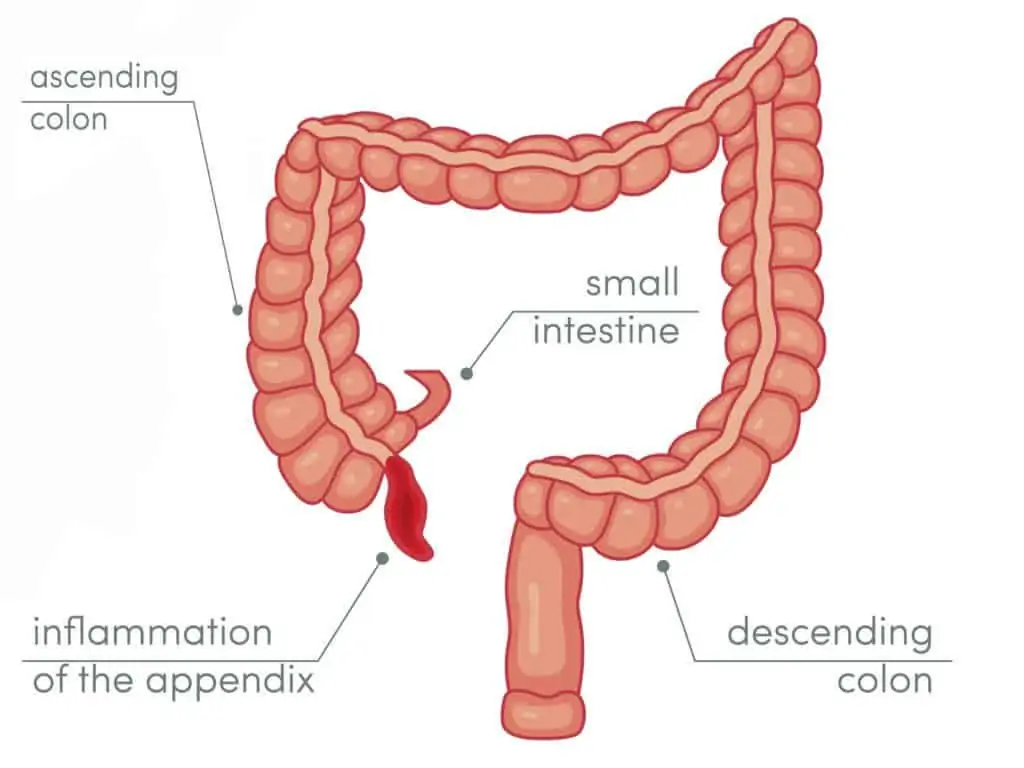The appendix is small worm-like structure that is attached to the right side of the large bowel. The function of the appendix is unclear – in some animals it has a role in digestion. Regardless, humans can live without an appendix without any apparent consequences.

Appendicitis is very common. One in fifteen people (nearly 7%) will develop appendicitis in their lifetime. The most common cause of appendicitis is blockage of the opening of the appendix in the bowel by a faecolith (firm piece of faeces). Other less common causes are swollen lymph glands, intestinal worms, or a cancer. Blockage of the appendix results in infection and inflammation, and if left long enough perforation (rupture).
Appendicitis presents in number of ways. Classically, people develop a vague pain or discomfort in the middle of the abdomen which is often mistaken for simple stomach upset. This pain gradually moves down to the lower, right side of the abdomen, becoming sharper in nature. Other symptoms may include:
- Fever
- Nausea
- Vomiting
- Diarrhoea
- Loss of appetite
Appendicitis is often diagnosed from the history and a doctor’s examination, but a blood test, a urine test, an ultrasound, or CT scan can help make the diagnosis clearer.
The treatment for appendicitis is antibiotics and removal of the appendix. If left untreated, the appendix can rupture, leading to peritonitis (a potentially fatal inflammation of the lining of the abdominal cavity).
Dr Lancashire performs keyhole surgery to remove the appendix (laparoscopic appendicectomy). A camera and other instruments are inserted into the abdominal cavity through three small incisions. The appendix is then disconnected from the large bowel. Rarely, the operation cannot be done laparoscopically, and you may need a larger cut in the abdomen.
Most people will spend one to three nights in hospital after the operation. Recovery is usually very quick, and most people can return to light activities within a week.


